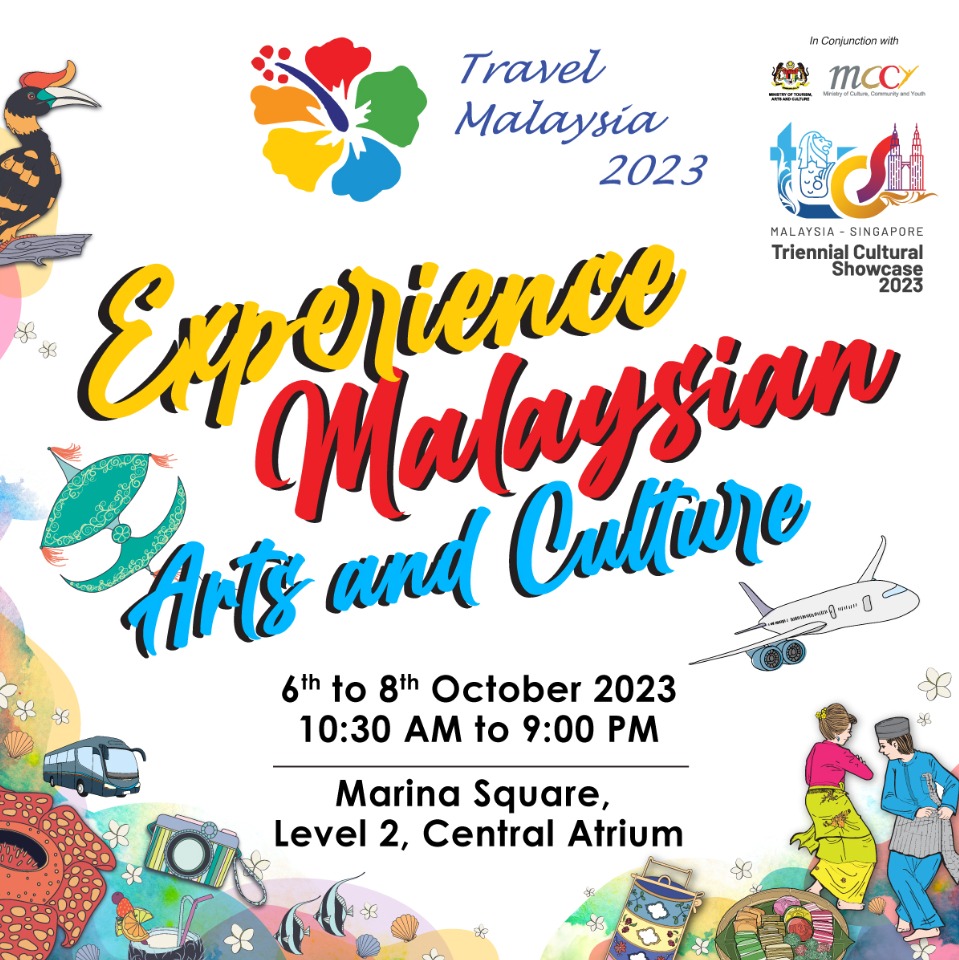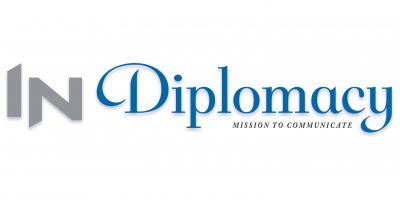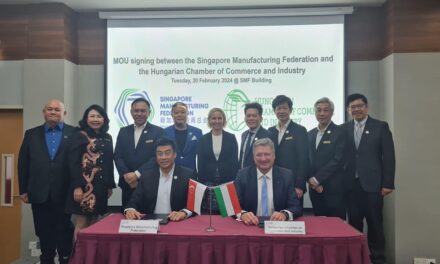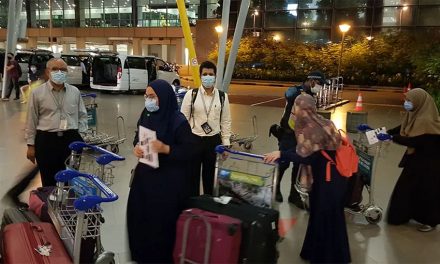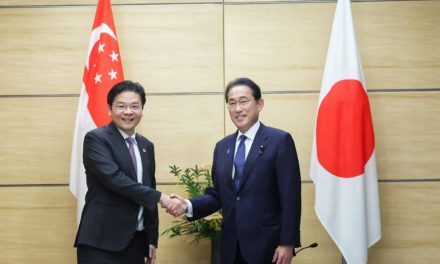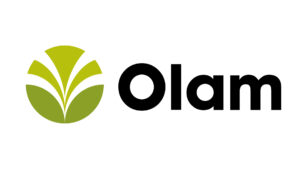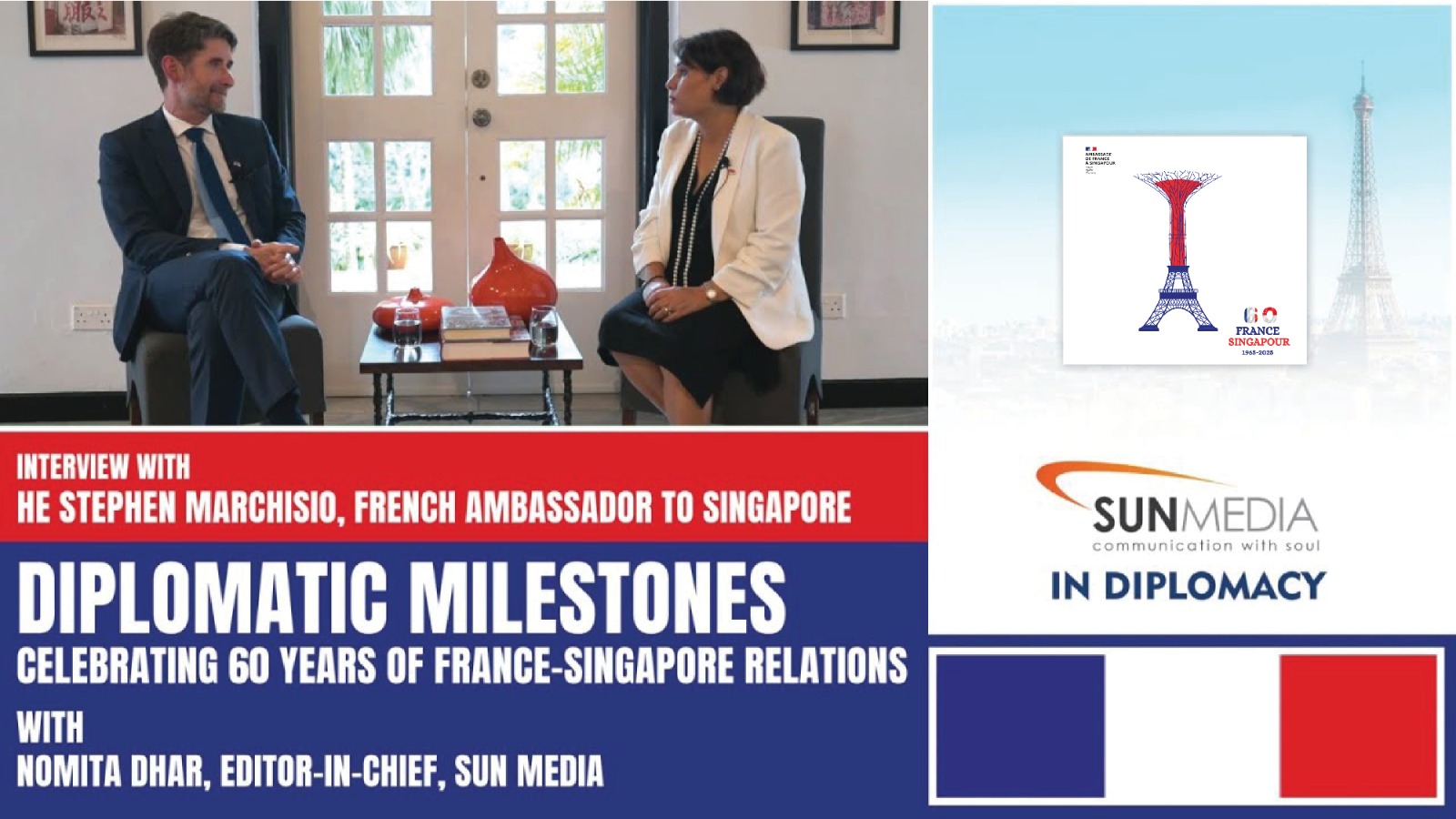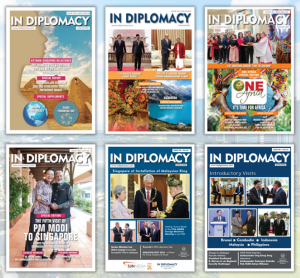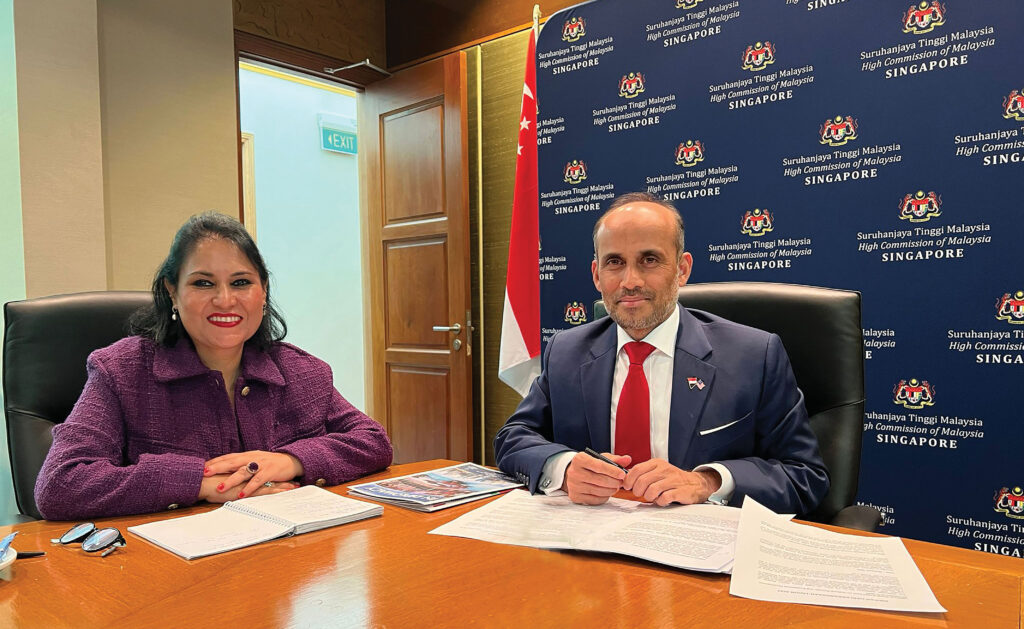

Malaysia’s celebrates its 66th National Day in August. To commemorate the occasion, Dato’ Dr Azfar bin Mohamad Mustafar, High Commissioner of Malaysia to Singapore shares his thoughts on the media campaign, the state of bilateral ties and the new MyHeart database with IN Diplomacy Editor-in-Chief, Ms Nomita Dhar
HAPPY National Day! Dato’ would you like to share something about the Malaysia Media Campaign that will be initiated in Singapore?
At the onset I would like to congralutate Singapore on its National Day celebrations. As Malaysia celebrates its National Day we wish Malaysian residents and friends of Malaysia in Singapore happiness and prosperity.
Although we are very close neighbours we are kickstarting a media campaign to promote Malaysia to Singaporeans and foreigners residing here. Starting with this special supplement in IN Diplomacy we want to draw attention to the latest on investment, trade and tourism. We plan a campaign in print, combined with a new podcast and social media series. The aim is to bring the people on both sides even closer. Malaysian High Commission through this initiative aims to act as a bridge between the new and the old. I would like to encourage businesses and people to come forward to be part of this campaign. Let’s all create and share joyful memories and together tap on new opportunities. This is what we are proposing to our stakeholders.
How are relations between Singapore and Malaysia?
Malaysia and Singapore have always been good neighbours and close trading partners. There are many Malaysians working in Singapore and we are one of each other’s largest trading partners. Since the borders reopened post-pandemic in April 2022, we have seen growth in our trade figures. This strong partnership will continue to flourish in many years to come.
Government-to-Government visits act as a catalyst to fuel growth, would you like to update us on these visits?
There have been interactions at the highest level – this year Prime Minister Anwar visited Singapore. During that visit he witnessed the signing of important agreements – on green and digital economy. These two agreements will further elevate our relationship as well as increase trade and investment between Singapore and Malaysia. PM Anwar during his visit also emphasised the close historical ties that we have and also the deep-rooted people-to-people ties, that he would like to strengthen in the years to come.
The highest profile visits when it comes to government-to-government work are the annual leaders’ retreats. It is Singapore’s turn to host, probably sometime this October. A few Singapore ministers have also visited their counterparts in Malaysia. These regular exchanges continue to be one of the hallmarks of our people-to-people relations.
For the benefit of our readers, what are the various arms of the Malaysian High Commision in Singapore that work for the smooth functioning of these ties?
The High Commision of Malaysia in Singapore is one of the biggest missions we have abroad and we also have other agencies here in Singapore. We have Defence, Ministry of Investment, Trade, and Industry (MITI), Malaysian Investment Development Authority (MIDA), Tourism, Immigration, Labour and Police. These agencies serve not only to ensure that any consular issues can be resolved quickly but also to foster trade relations and take care of Malaysians working here in Singapore.
What trends do you see in the investment sector between Malaysia and Singapore? Can we look forward to greater growth this year?
Investment from Singapore has been rising since the reopening of the border. In 2021, Singapore was the second biggest investor, with most of the investment concentrated in Johor. I foresee investment from Singapore continuing to be one of the important sources for Malaysia.
In addition to the digital and green economy, Singapore also brought up one of the lessons of the pandemic is that we need to secure supply chains, especially when it comes to food. So I think one of the areas that both sides are also exploring is food security. Malaysia has a lot of land, a skilled and competent workforce and less labour costs compared to Singapore so there is potential for good investments in the agri food sector that can benefit both sides.
What is your message to Malaysians residing in Singapore for this National Day?
My message to Malaysians in Singapore is wherever we go, Malaysia should always be in our heart. We should try to contribute back to our country. This is something that we always encourage. They may not be able to come back and work in Malaysia but they can always contribute back to their motherland in various ways. One of the things we launched this year through TalentCorp is the MyHeart initiative (myheart.my) where all Malaysians living abroad or the diaspora, can register in the database listing out their expertise and other details. It is one way we can get to know them better and see how can contribute back to the country. The database is very timely so that the Malaysian diaspora can find it easier to contribute back to Malaysia.
Many Singaporeans go across to Malaysia for holidays and many of them do so at the same time. Malaysians too come to work or visit Singapore. How do you make sure that travel is more seamless for both sets of visitors; that there are less complaints about long waiting times and traffic jams. Is there any headway into solving this problem?
I think the congestion at our land border points has been a problem for many, many years. And this has been exacerbated after the opening of the border in April 2022. As you rightly pointed out, there are many Malaysians working in Singapore but continue to live in Johor, commuting daily to Singapore in the mornings contributing to jams during the rush hour – between six to eight a.m. on weekdays. So we are seeing more than 200,000 people, mostly on motorcycles, crossing into Singapore. They take a long time to clear past Malaysia and Singapore immigration checkpoints. We have been communicating to each other and there are mechanisms in place, for example, our Malaysian Immigration department and Singapore’s ICA to talk and find ways to come up with solutions to overcome some of these operational challenges.
There have been several measures that have been implemented to ease the congestion during the rush hour. For example, the number of motorcycle lanes have increased and so on. On the other hand, whenever Singapore has long school or weekend holidays, for example, there will be a lot of cars going into Malaysia resulting in congestion, waiting three, four or maybe up to five hours, to clear both checkpoints. Both sides are working tirelessly to overcome these issues. As you are probably aware, the MB (Menteri Besar or Chief Minister) of Johor has been visiting the checkpoints to check on the situation and talking to us regularly to make sure all the steps that can be taken to improve the situation happens. However, the “seamless” journey you mentioned will take a bit more time to become a reality as both sides continue to look for long term solutions to ease this congestion.
Singaporeans are not the only ones who are holidaying in Malaysia. Many from all over the world stay here (such as diplomats) and go to visit. Where do you recommend they should go in Malaysia?
We offer everything. We have beaches, islands, marine activities, rainforests, mountains as well as many good places for accommodation, food and shopping that are cheaper compared to Singapore. This is also helped by the favourable current exchange rate for those with Singapore dollars. It also means Malaysia offers great value for money in terms of her tourism products and services. Just for your information, in 2019, we received about 26 million tourists who generated about RM86 billion! Since we re-opened the border in April 2022, we attracted 10 million visitors so we have some ways to go before we hit again our pre-COVID numbers. This is also why the Malaysian government is investing heavily in promotional activities to encourage tourists to come back to Malaysia. We are also investing to upgrade our tourism infrastructure and spend creating new and more interesting tour packages.
This year, Malaysian companies participated in NATAS. There was also the Tourism Malaysia Fair which was held in May with another one upcoming in October. Then you also had the Malaysia Fest in July. How has the response been so far?
The response to these promotional activities in Singapore has been very good. Before COVID, in 2019, Singaporean contributed the most number of tourists arrivals to Malaysia averaging up to 10 million visits per year. I feel this trend will continue. Singaporeans and expats here see Malaysia as their natural holiday hinterland with more to offer in terms of attractions compared to what is available in Singapore.
| Meaning of MALAYSIA MADANI In English it means “Civil Malaysia” and is a policy framework and government slogan introduced by the administration led by the 10th Prime Minister, Anwar Ibrahim. The concept focuses mainly on good governance, sustainable development and racial harmony in the country. |
